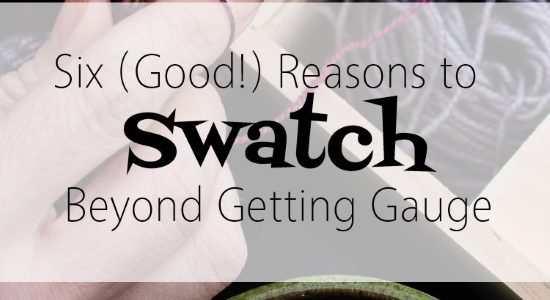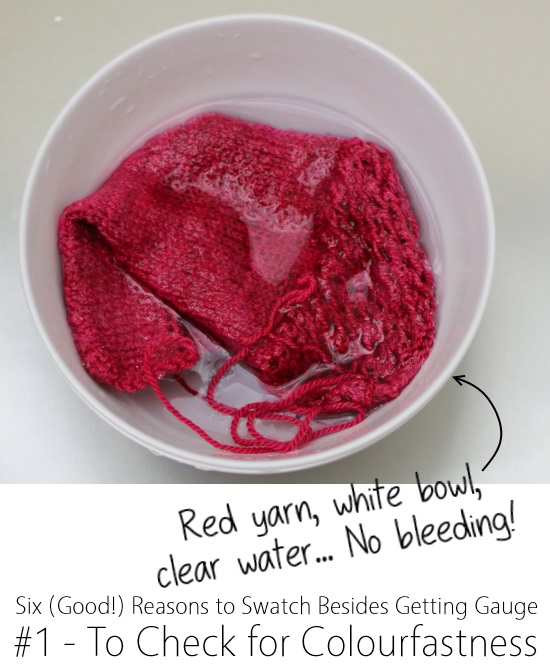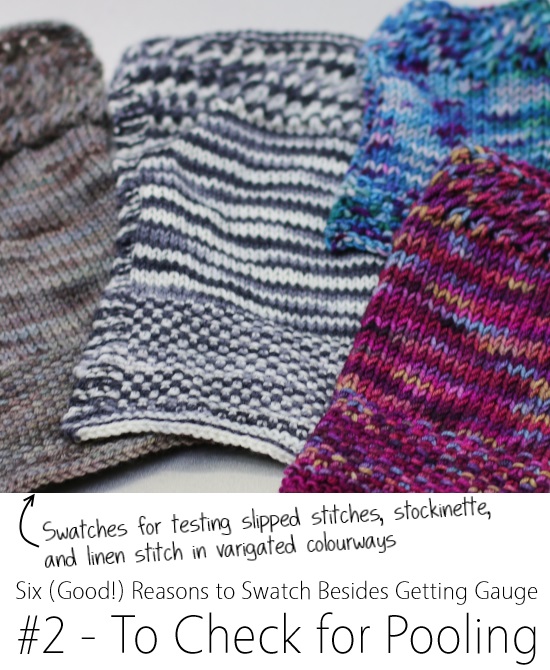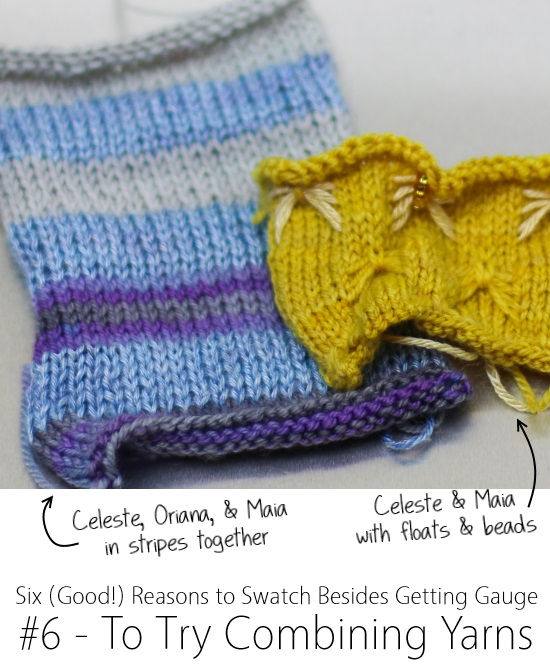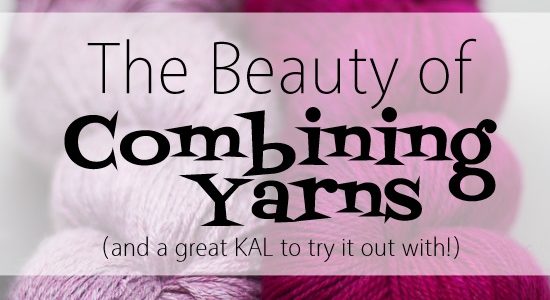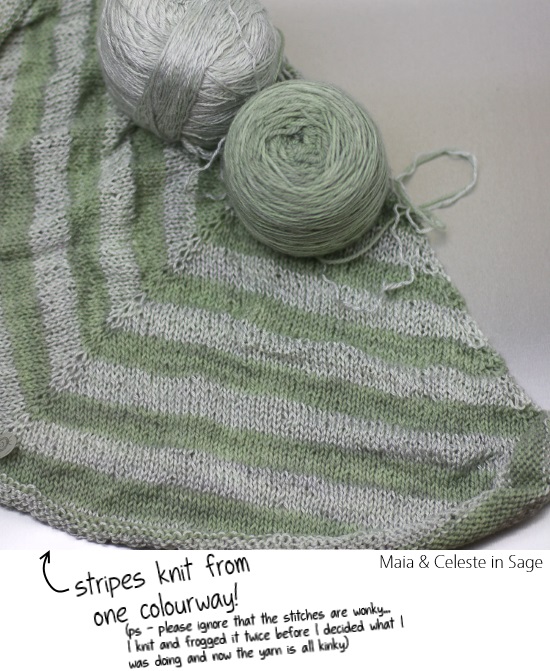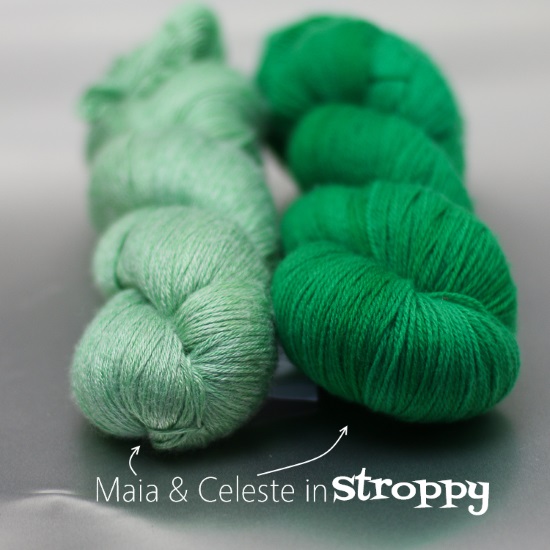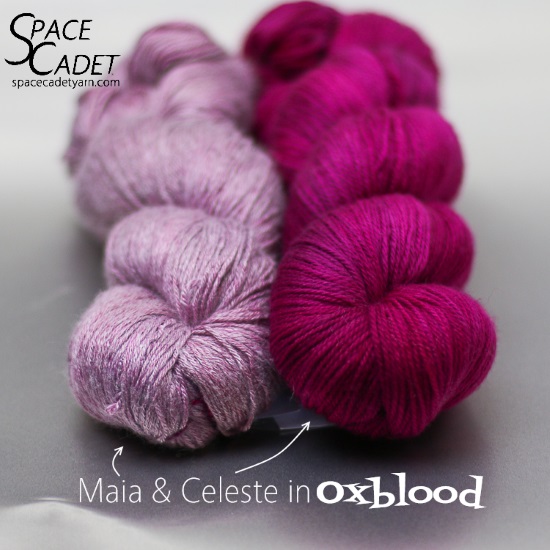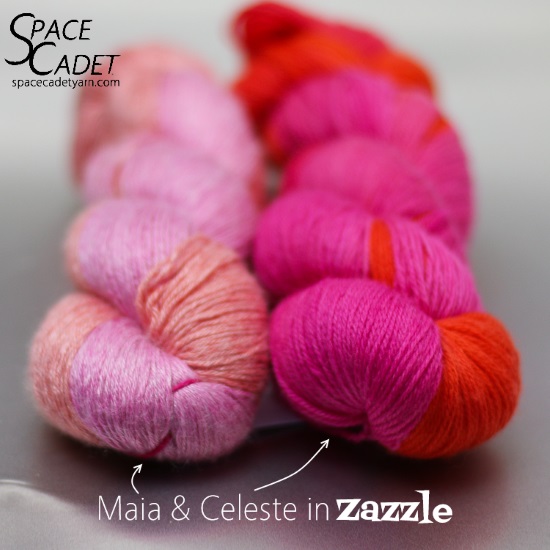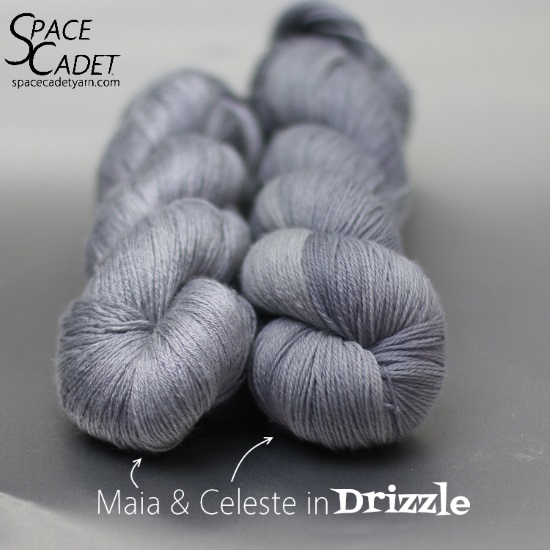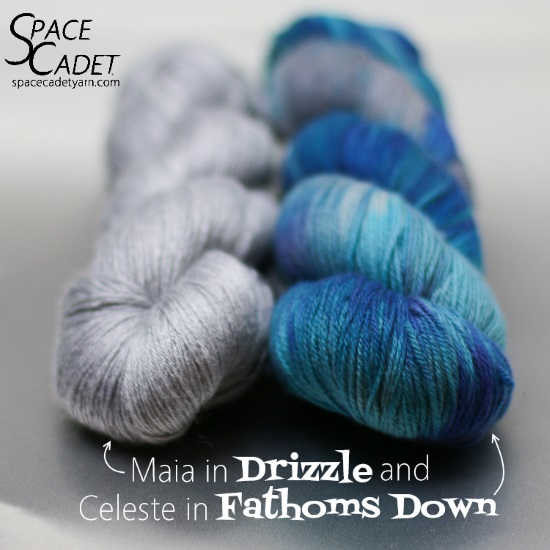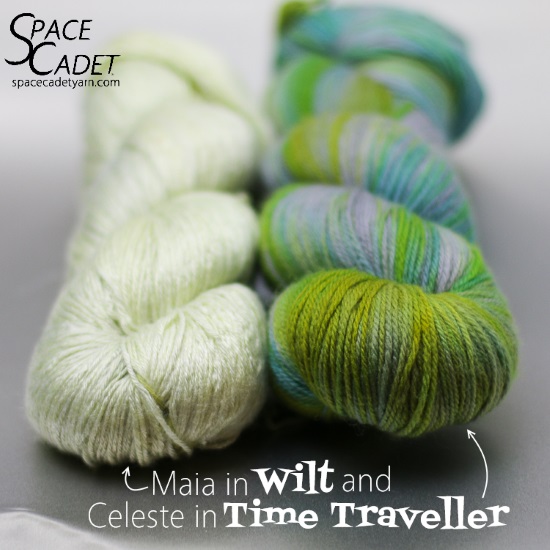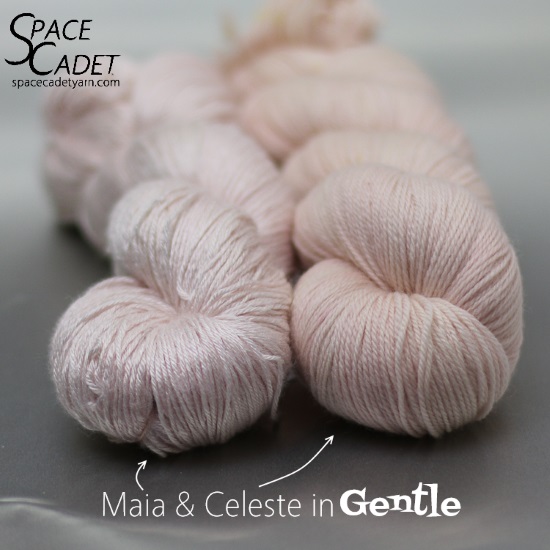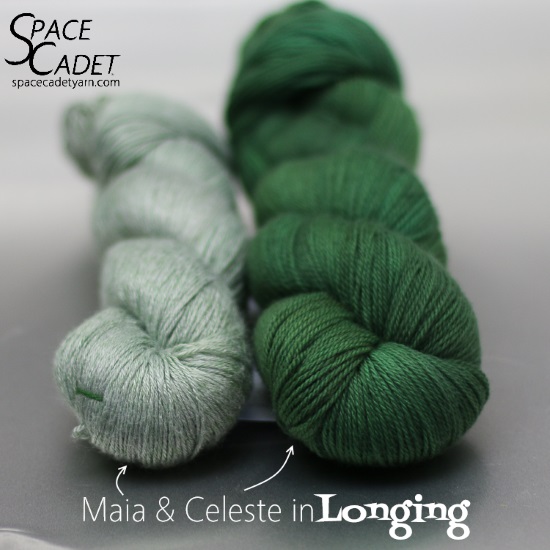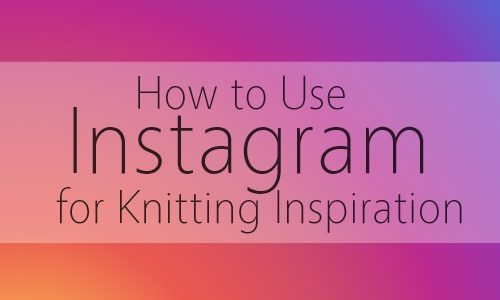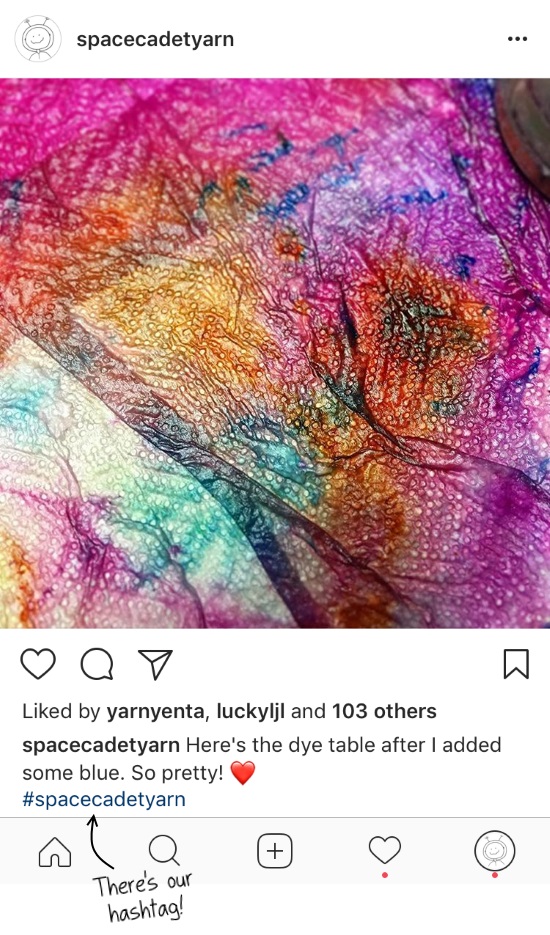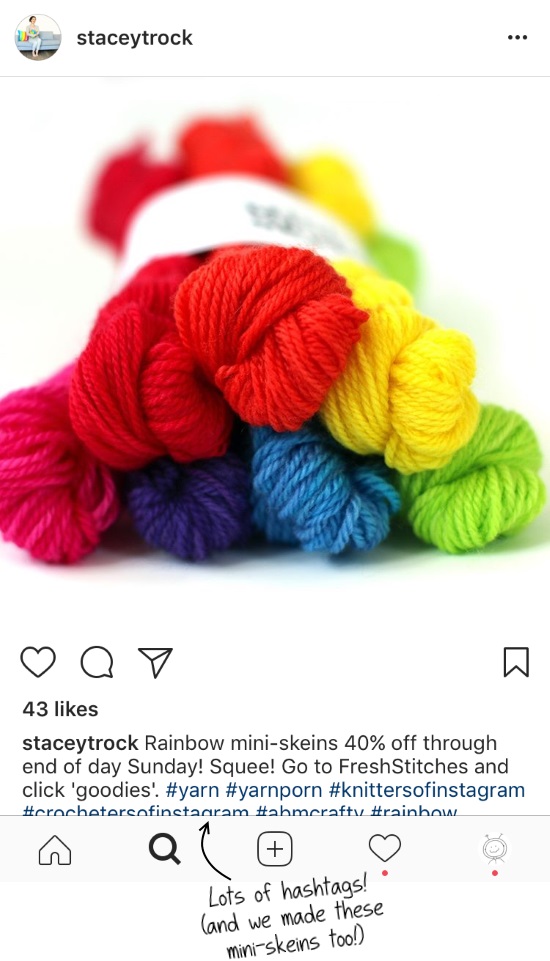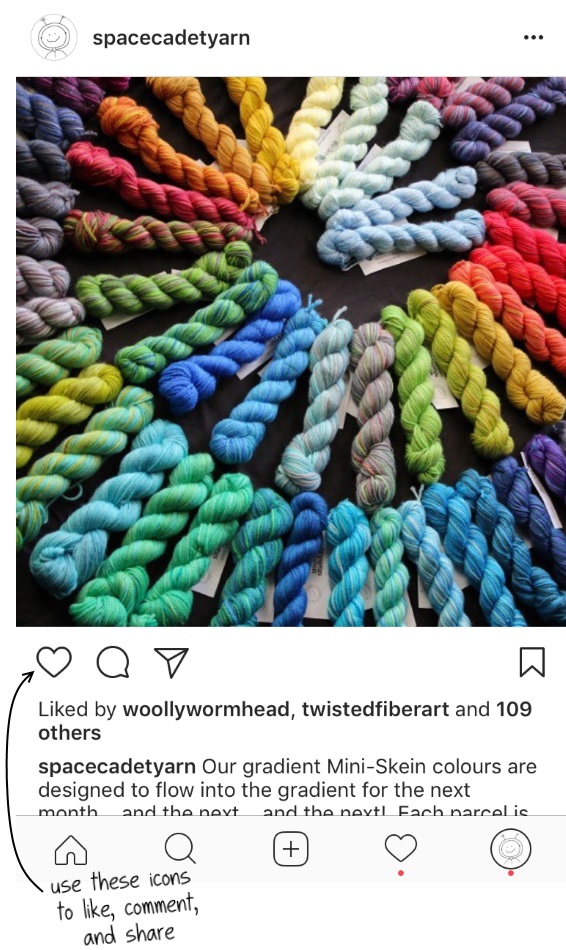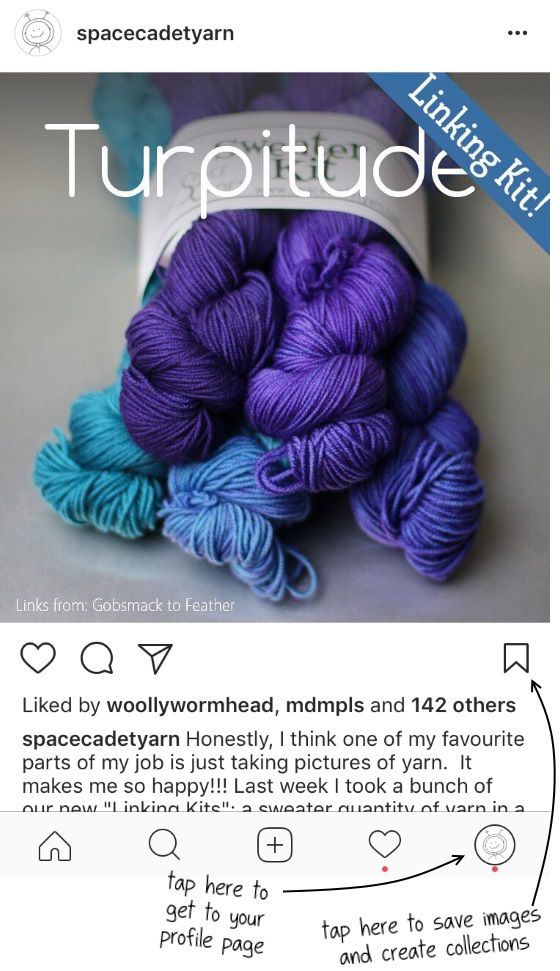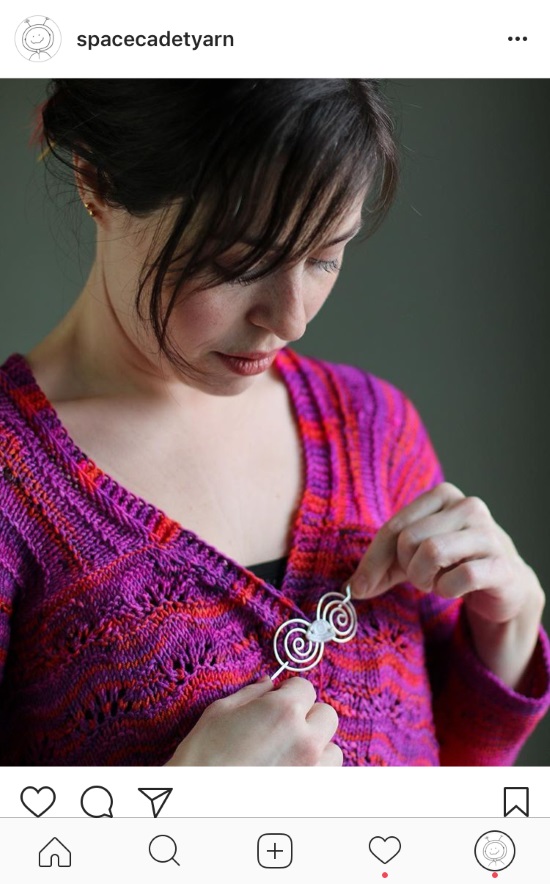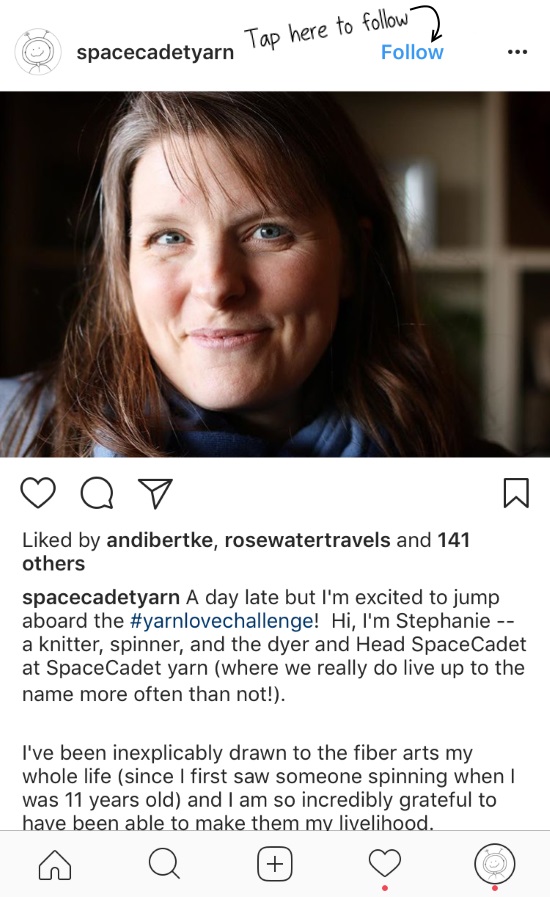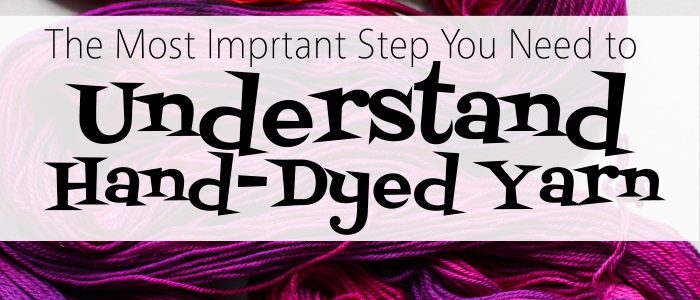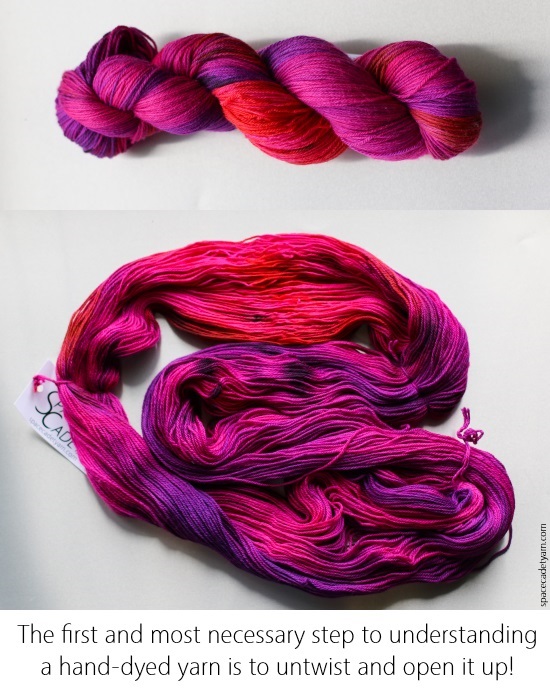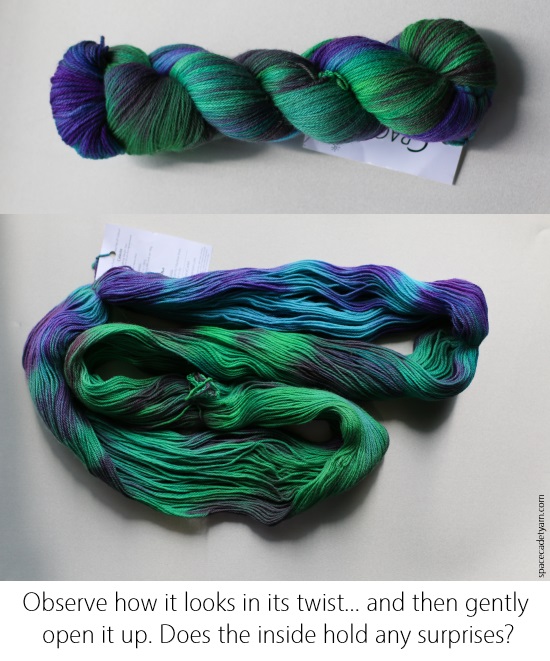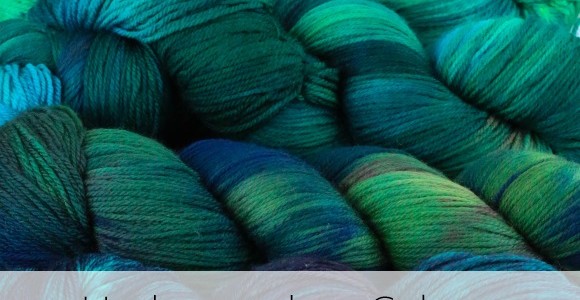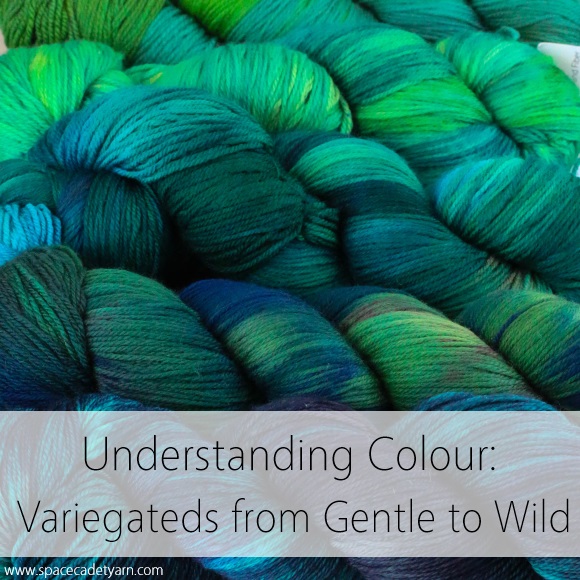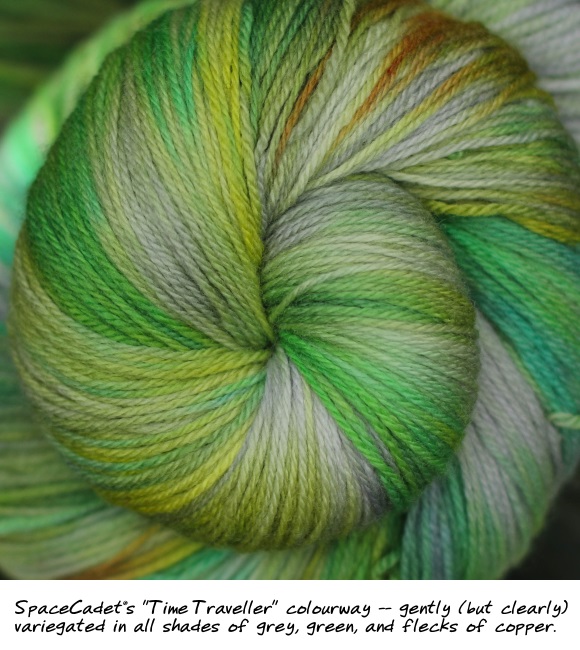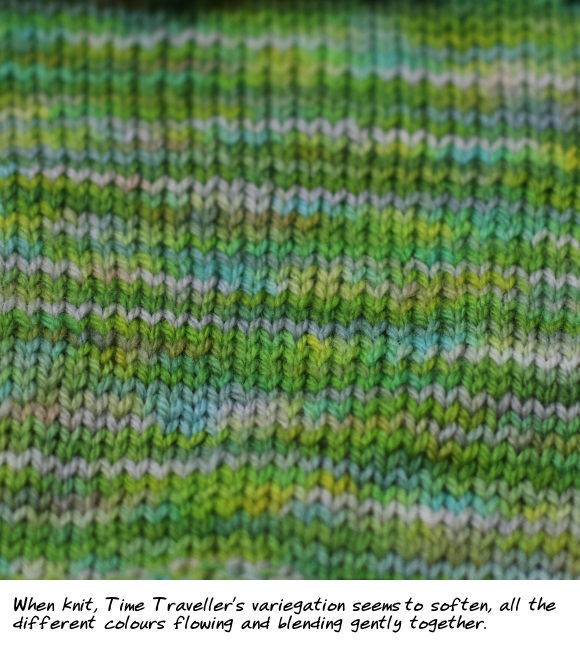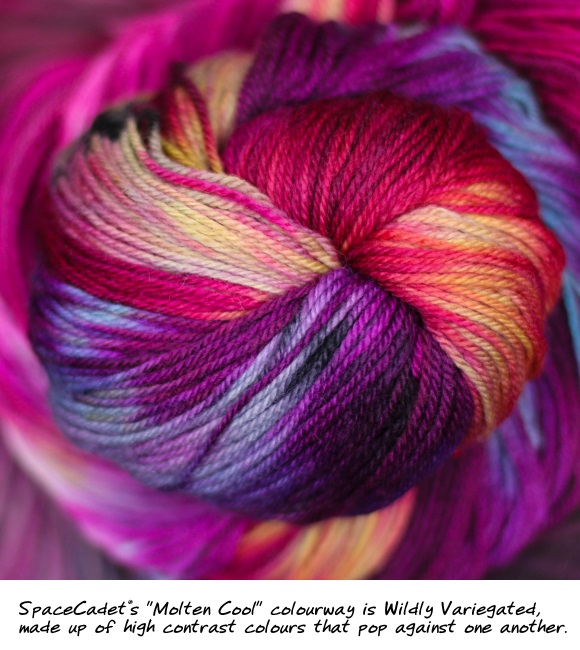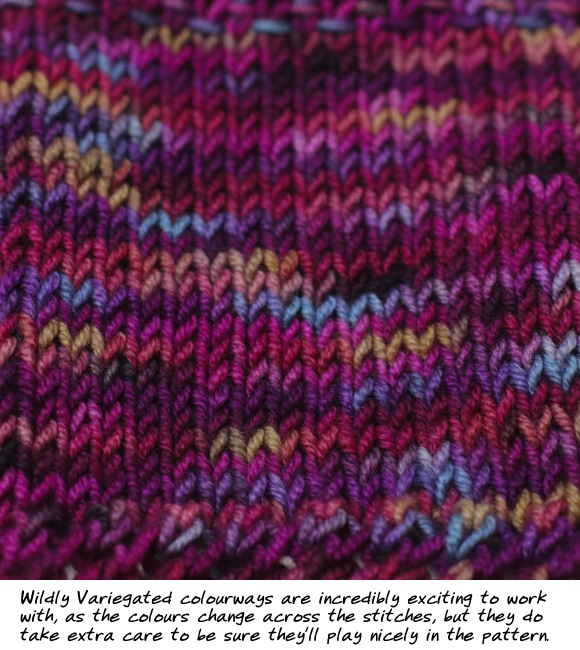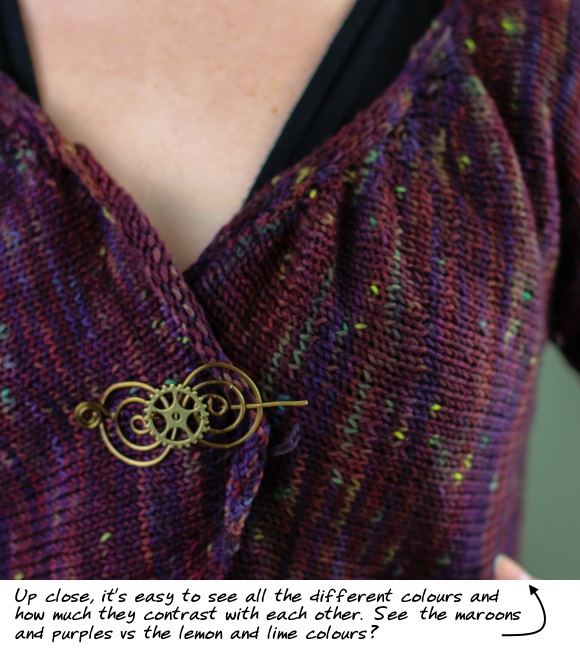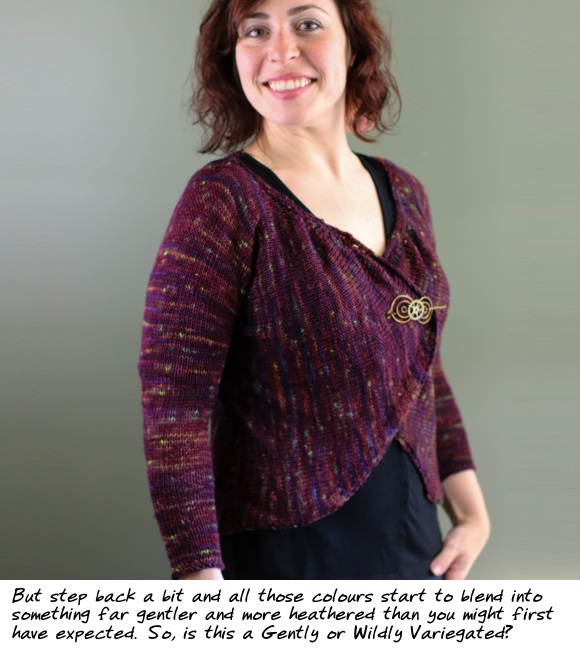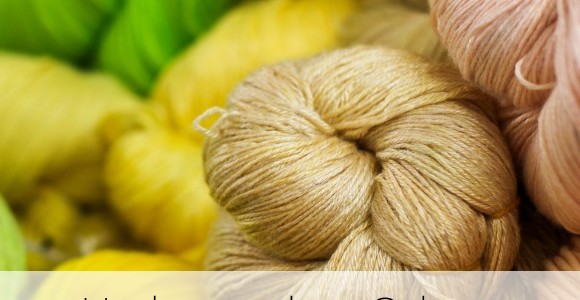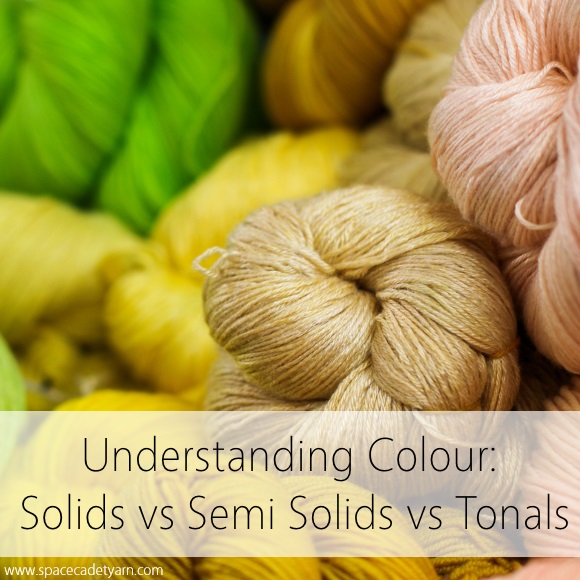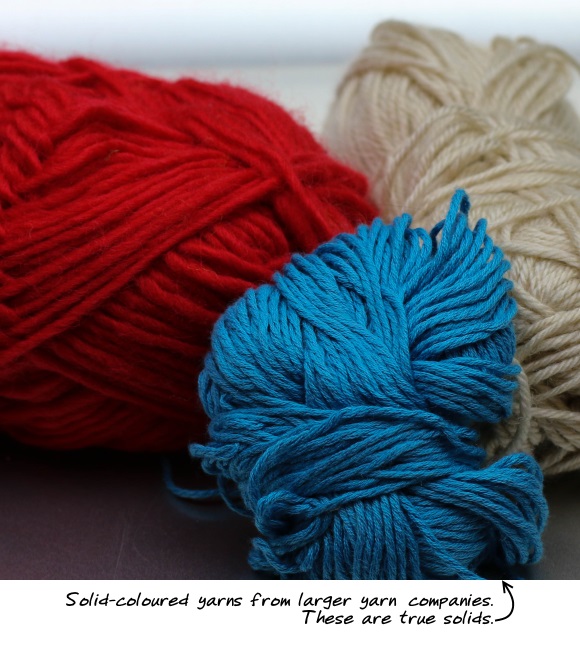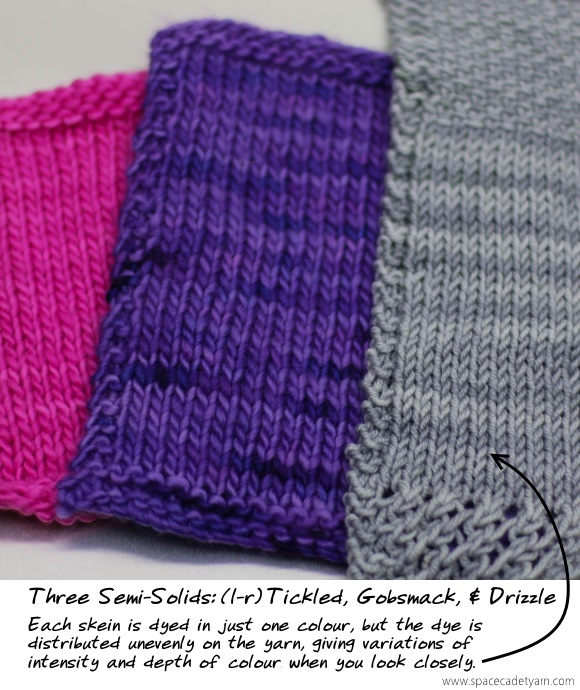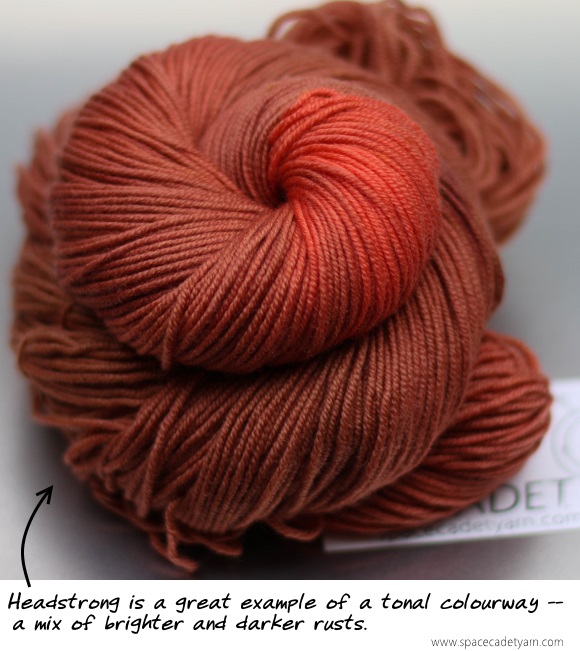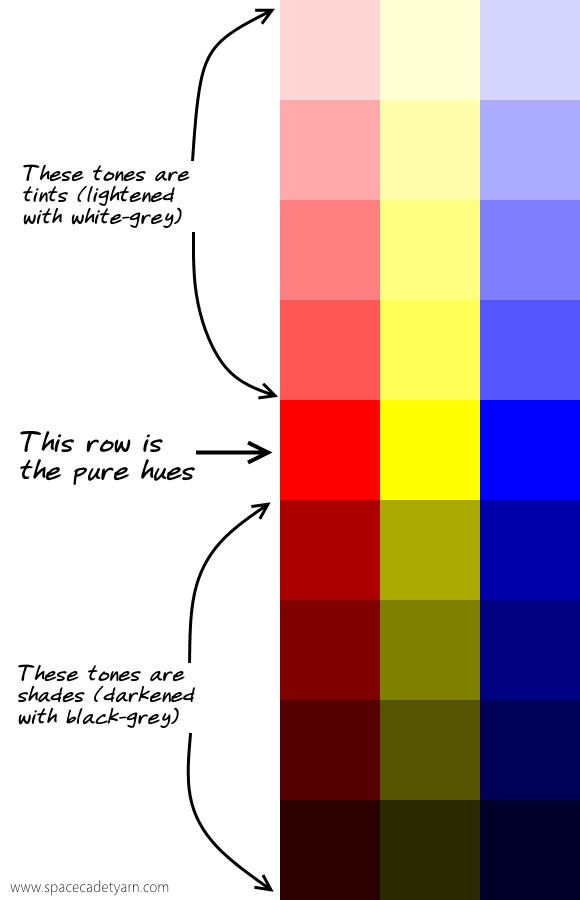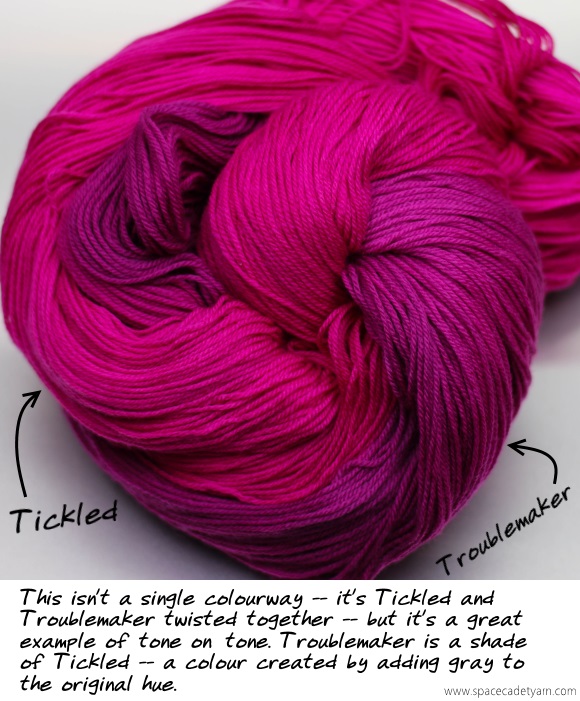We’ve spent the whole week sending out parcels filled with gorgeous combinations of Maia and Celeste and, as I see the fabulously creative pairings folks have come up with, I am realising that this is going to be a super fun KAL! And, with the yarn arriving on customer’s doorsteps, it’s time to start thinking about swatching.
*sound of a record scratching*
Why yes, I did just used the words “super fun” and “swatching” in the same breath! I know we all think swatching is about getting gauge (and it is) and may be a little boring and frustrating (and it is) but it’s also about so much more than that. And for this KAL, where we’re combining two very different yarns together in one project, swatching is a really important step toward to getting to know how your two yarns play together and how to bring out the best in them.
But if you’re not sold on the idea of swatching, that’s ok — you’re not alone. Lots of folks feel the same way. So before you run away and pretend I never even mentioned the s-word, let me take a moment to share with you…
Six (Good!) Reasons to Swatch Besides Getting Gauge
To Check for Colourfastness
I sometimes come across a misconception about hand-dyed yarn: that it’s not as colourfast as commercial. And so I’m always happy to explain all the steps we take to make sure your SpaceCadet yarn won’t bleed or crock. Almost all professional, experienced hand-dyers employ professional-grade dyes and multi-step processes to ensure their yarns are fully set and colourfast, so you can feel confident of that when you buy from them.
But some newer dyers may not know to take so many steps, and full-time dyers can make mistakes, so it is always worth checking your yarn is colourfast before casting on your project, particularly if you’re using multi-hued or high-contrast yarns. Soaking a whole skein to see if it bleeds is pretty impractical, but a swatch is perfect for this. Cast on a few inches, knit or crochet a quick square, and then give it a bath. If the dye hasn’t set properly, you’ll know pretty quickly, and it’s a lot better to find out after knitting a quick swatch than after working for hours on a full project
To Check for Pooling
Pooling happens when the different colours in a variegated yarn start to stack on top of each other with each row you knit. The resulting pools of colour are something that some folks love but lots of other folks want to avoid. Because pooling depends on the size of your stitches (needles) and the width of your project, swatching won’t give a definitive answer to how the colour in your yarn will behave in your final project, but it will give you a much clearer idea.
You can tally how long the colour repeats will work up at your gauge, and then quickly see what effect adjusting needle sizes makes. You can anticipate whether your yarn will create long bands of colour or short bursts, and then try out different stitches to move the colour around: switch from stockinette to garter to slipped stitches and so on to see how the colour works in each one. Creating a small swatch is a quick and easy way to get a feel for how the yarn is likely to behave before you cast on a bazillion stitches.
To Try Out a Pattern’s Techniques
Many patterns recommend swatching in stockinette — and that can work just great — but when a pattern recommends swatching in the particular stitch that the design is worked in, you have the chance to get familiar with the techniques you’ll be using… before you’ve got 250 live stitches!
Once you’ve knit enough swatch to check your gauge, take that opportunity to go a little bit further and try out any tricky steps that you see in the pattern. Is there an increase or decrease you’ve never tried before? Feeling a little nervous about joining in a second colour? Try it out in your swatch — you’ll work out the kinks quickly and be a lot more confident when you cast on the full project.
To Test the Weight of the Fabric on Different Needle/Hook Sizes
So many times I get asked, “What size needles is this yarn for?” and I’m always excited to talk about all the fabulous results you can achieve when you get creative with needle and hook sizes. There are no set rules and no yarn is for just one size of needle or hook. One of my favourite things to do is to take fingering yarn (which most ballbands will tell you is “for” size 1 or 2 needles) and knit it on size 8s. The resulting fabric is light and airy, perfect for summer shawls and cardigans.
And your swatch is the perfect place to test that out! Cast on with the needle or hook size you think you’re supposed to use, and then take it up a few sizes. Do that several times and see what happens to the fabric. Does it become a thing of beauty or does it lose its structure? Can you imagine it in a completely different garment than you’d first planned? Suddenly your gauge swatch goes from something a tool for fitting into someone else’s recipe to one that opens you up to new possibilities!
To Get to Know that Yarn You’re Going to Spend Hours (and Hours!) With
Knitting or crocheting a whole sweater takes a lot of time… and, if you’re going to put that many hours into a project, you want to make sure that you and your yarn get along really well. Swatching is your chance for the yarn to “talk” to you and let you know what it’s really best suited to. Before you make a decision about the project it will become or the techniques you will use with it, you’ll want to spend a little time getting to know it — and that’s what swatching does.
You might find it argues with your wooden needles but glides on your steel needles. You may discover it blooms into an almost completely different yarn once you soak it. Or blocking may transform your swatch so much that you decide on whole new project. Swatching is like a sneak peek into the future! Such a valuable thing to do.
To Try Combining Yarns
So often at shows, when I show a customer Maia and Celeste side-by-side and tell her that they play beautifully together, I see the slightest twinge of doubt go across her face. And I get it — they’re such completely different yarns, how could they work together? It’s all well and good for me to say it, but nothing beats testing it out.
And so what do you do? You swatch! You try combining them in stripes — first thin and then thick. You test them in mosaic stitch and slipped stitches. You compare stockinette vs garter, linen stitch vs moss, single crochet vs treble. When there’s only a few inches to knit, you have time to really explore how two yarns work together. And then you can choose a pattern that will really enable them bring out the best in each other. The swatch is what ensures your final project will be all that you hoped for!

